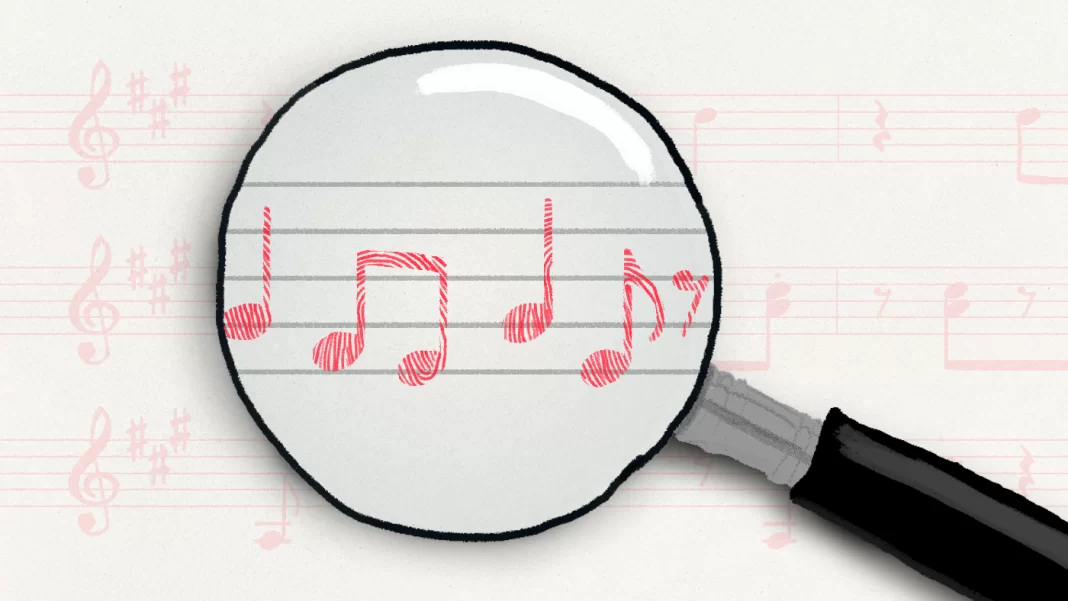Forensic musicology, a branch of forensic science, is an interdisciplinary field that applies musicological knowledge and analytical techniques to the investigations of music copyright infringement. By utilizing scientific methods and expertise, forensic musicologists aim to uncover crucial information based on the musical facts found in two or more works. Forensic musicology can also be used to avoid music copyright infringement by comparing two works before a recording is released and possibly recommending changes to areas of the work that might be problematic or cause confusion to the general listener. This article delves into the foundations, methodologies, and applications of forensic musicology, highlighting its significance in contemporary legal contexts.
This article is developed using insights from Sandy Wilbur’s remarkable career as a forensic musicologist and exemplifies the fusion of her passion for music with her astute comprehension of its legal dimensions. Though her initial trajectory did not lead directly to this profession, her exceptional amalgamation of musical proficiency, legal acumen, and analytical expertise propelled her into a highly sought-after position within the field.
The path to becoming a forensic musicologist necessitates a diverse range of skills, which Sandy Wilbur possesses in abundance. A strong academic foundation, including the attainment of at least one advanced degree, and a thorough grasp of music theory, is paramount. Sandy’s educational journey exemplifies this requirement, as she pursued studies in composition, performance, and music theory at Sarah Lawrence College, followed by an immersive exploration of ethnomusicology at UCLA. Her focus on ethnomusicology, particularly her research on Pawnee Indian music, bestowed upon her a profound appreciation for the cultural significance of music, thereby enhancing her ability to dissect and interpret musical components across diverse contexts.
The Foundations of Forensic Musicology:
Music Analysis and Acoustic Examination:
Forensic musicologists analyze audio recordings, transcriptions, and sheet music to determine various musical parameters, such as melody, harmony, rhythm, structure, and lyrics (if they are part of the musical work). Acoustic examination involves scrutinizing the spectral content, timbre, pitch, and other acoustic characteristics of a given recording. These analyses help establish similarities or discrepancies between audio samples and provide valuable insights for legal investigations.
Music Copyright and Intellectual Property Law:
Understanding copyright law is crucial for forensic musicologists. For instance, recordings released before 1978, fall under the 1909 Copyright Act. This means that only the sheet music sent to the US copyright office (the deposit copy) can be considered in a copyright infringement claim. After 1978, the Copyright Act of 1976 allows recordings, instead of sheet music only, to be deposited. Forensic musicologists must comprehend legal frameworks, such as intellectual property rights, to ascertain issues like copyright infringement, unauthorized sampling, or unauthorized use of copyrighted material. Their expertise helps in cases involving music plagiarism, where the originality and ownership of composition are questioned. They must understand the legal concepts of “substantial similarity” and “striking similarity.” In cases of sampling (where a part of an actual recording was digitally copied), they must be able to prove that the second work took the sample from the original recording.
Methodologies and Techniques:
Musical Forensic Analysis:
Forensic musicologists employ a range of analytical techniques, ranging from transcribing accurately the musical elements, but also include spectrogram analysis, melodic contour analysis, and harmonic progression analysis, among others. These methods allow them to identify distinctive musical patterns, compare audio samples, and differentiate between protected copyrightable elements and common and generic musical building blocks that can be used by anybody. Researching other works that share the same patterns but predate both works in question (prior art research) can support or refute claims made in legal disputes.
Digital Audio Forensics:
With the rise of digital music production and distribution, forensic musicologists often rely on digital audio forensics techniques, looking for musical “fingerprints” that prove or disprove that there was a digital taking, or sample, of another work.
Speaker and Voice Identification:
In rap and vocal examinations, timber, range, intonation, phrasing, and other identifying features can help explain similarities or differences between the vocal performances in recordings.
Applications in Legal Contexts:
Copyright Infringement and Plagiarism Cases:
Forensic musicology plays a vital role in resolving copyright disputes, particularly in cases of alleged music plagiarism. Music plagiarism is found when somebody uses elements of another person’s music without crediting the original creator. Copyright infringement is the unlawful taking of copyrighted material from another person’s work, that can be taken either intentionally or unconsciously. By conducting detailed comparative analyses of musical elements, including melody, harmony, rhythm, and structure, experts can provide evidence to support or refute claims of infringement, shedding light on issues of artistic originality and intellectual property rights.
Forensic Musicology in Criminal Investigations:
In criminal investigations, forensic musicology can be used to analyze background noise, voices, or music captured in surveillance recordings, enhancing the interpretation of audio evidence. By identifying crucial elements within recordings, forensic musicologists can contribute to identifying suspects, establishing timelines, or corroborating witness testimonies.
Historical Audio Restoration and Authentication:
Forensic musicology plays a significant role in the restoration and/or authentication of historical audio recordings. By applying meticulous analysis and research, musicologists can identify potential tampering or alterations that may have occurred over time. This process ensures the accuracy and authenticity of historical recordings, contributing to the preservation of cultural heritage and facilitating accurate historical research. One such example is Ms Wilbur’s research on all the songs used in the award winning film “O Brother Where Art Thou,” that determined who the original composer(s) might be, what works were in the public domain, and who should be credited for the versions of the songs used.
Forensic musicology is a specialized field that combines scientific methodologies, music analysis, and legal expertise to investigate audio evidence in legal and criminal contexts. By utilizing musicological knowledge, acoustic examination, and digital audio forensics techniques, forensic musicologists provide valuable insights into issues such as copyright infringement, music plagiarism, authenticity, and historical audio restoration. With its interdisciplinary nature, forensic musicology continues to evolve, playing a crucial role in the legal system, ensuring the protection of intellectual property rights, and contributing to the accuracy and integrity of audio evidence in investigations. As technology advances and legal disputes involving music become more complex, the significance of forensic musicology is likely to increase, making it an indispensable discipline in the field of forensic science.






